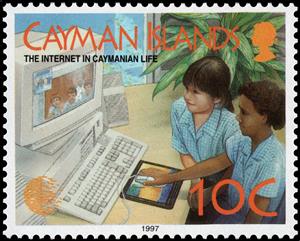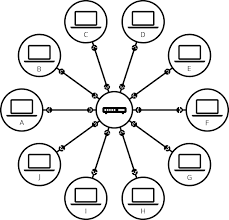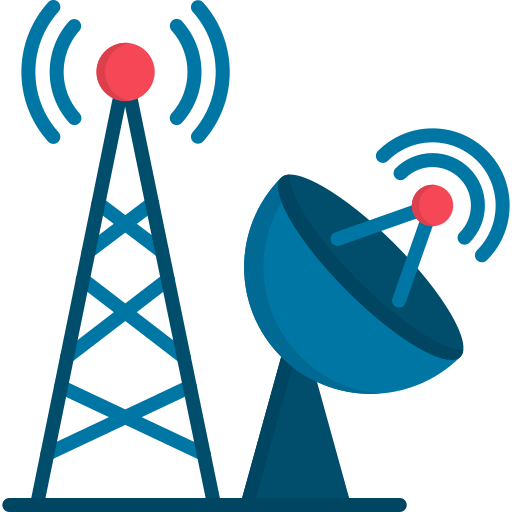Stamp: Children on the Internet (Cayman Islands 1997)
Children on the Internet (Cayman Islands 1997)
10 October (Cayman Islands ) within release Telecommunications goes into circulation Stamp Children on the Internet face value 10 Cayman Islands cent
| Stamp Children on the Internet in catalogues | |
|---|---|
| Michel: | Mi: KY 779 |
Stamp is horizontal format.
Also in the issue Telecommunications:
- Stamp - Satellite Dish face value 60;
- Stamp - Cable ship face value 25;
- Stamp - Area-Code „345“ face value 30;
- Stamp - Children on the Internet face value 10;
Stamp Children on the Internet it reflects the thematic directions:
A computer is a machine that can be programmed to automatically carry out sequences of arithmetic or logical operations (computation). Modern digital electronic computers can perform generic sets of operations known as programs. These programs enable computers to perform a wide range of tasks. The term computer system may refer to a nominally complete computer that includes the hardware, operating system, software, and peripheral equipment needed and used for full operation; or to a group of computers that are linked and function together, such as a computer network or computer cluster.
The Internet (or internet) is the global system of interconnected computer networks that uses the Internet protocol suite (TCP/IP) to communicate between networks and devices. It is a network of networks that consists of private, public, academic, business, and government networks of local to global scope, linked by a broad array of electronic, wireless, and optical networking technologies. The Internet carries a vast range of information resources and services, such as the interlinked hypertext documents and applications of the World Wide Web (WWW), electronic mail, telephony, and file sharing.
Telecommunication, often used in its plural form or abbreviated as telecom, is the transmission of information with an immediacy comparable to face-to-face communication. As such, slow communications technologies like postal mail and pneumatic tubes are excluded from the definition. Many transmission media have been used for telecommunications throughout history, from smoke signals, beacons, semaphore telegraphs, signal flags, and optical heliographs to wires and empty space made to carry electromagnetic signals. These paths of transmission may be divided into communication channels for multiplexing, allowing for a single medium to transmit several concurrent communication sessions. Several methods of long-distance communication before the modern era used sounds like coded drumbeats, the blowing of horns, and whistles. Long-distance technologies invented during the 20th and 21st centuries generally use electric power, and include the telegraph, telephone, television, and radio.




